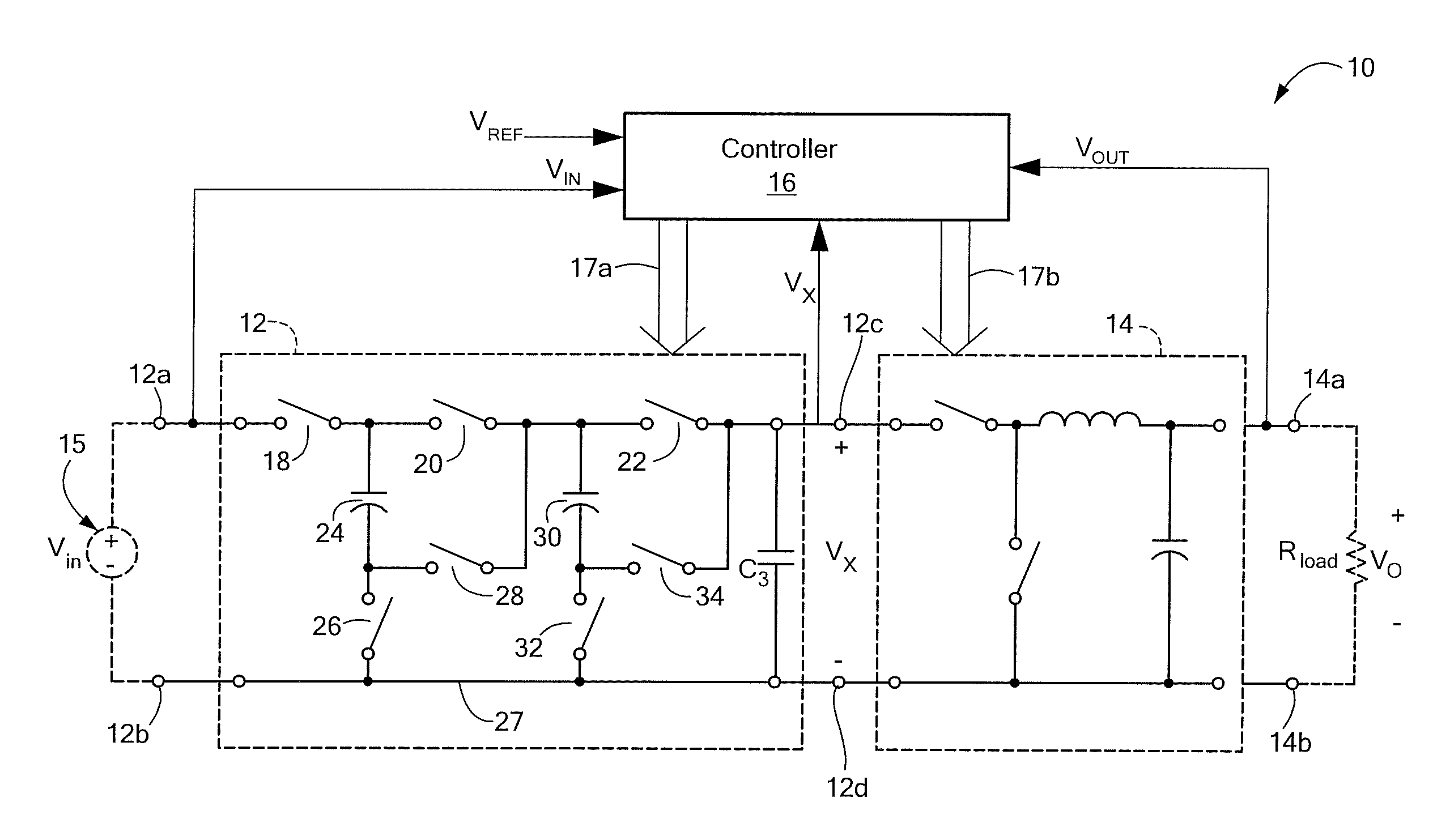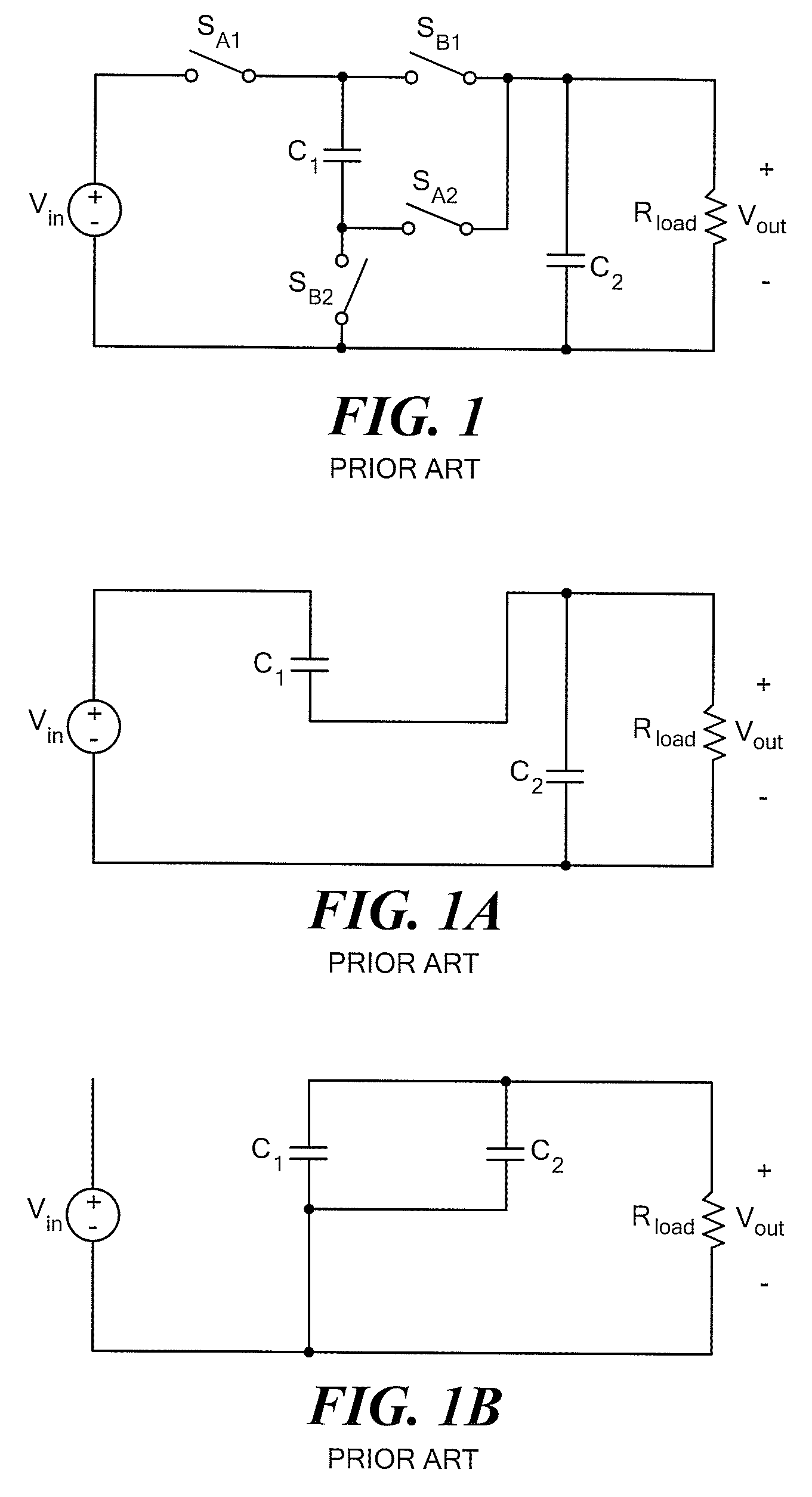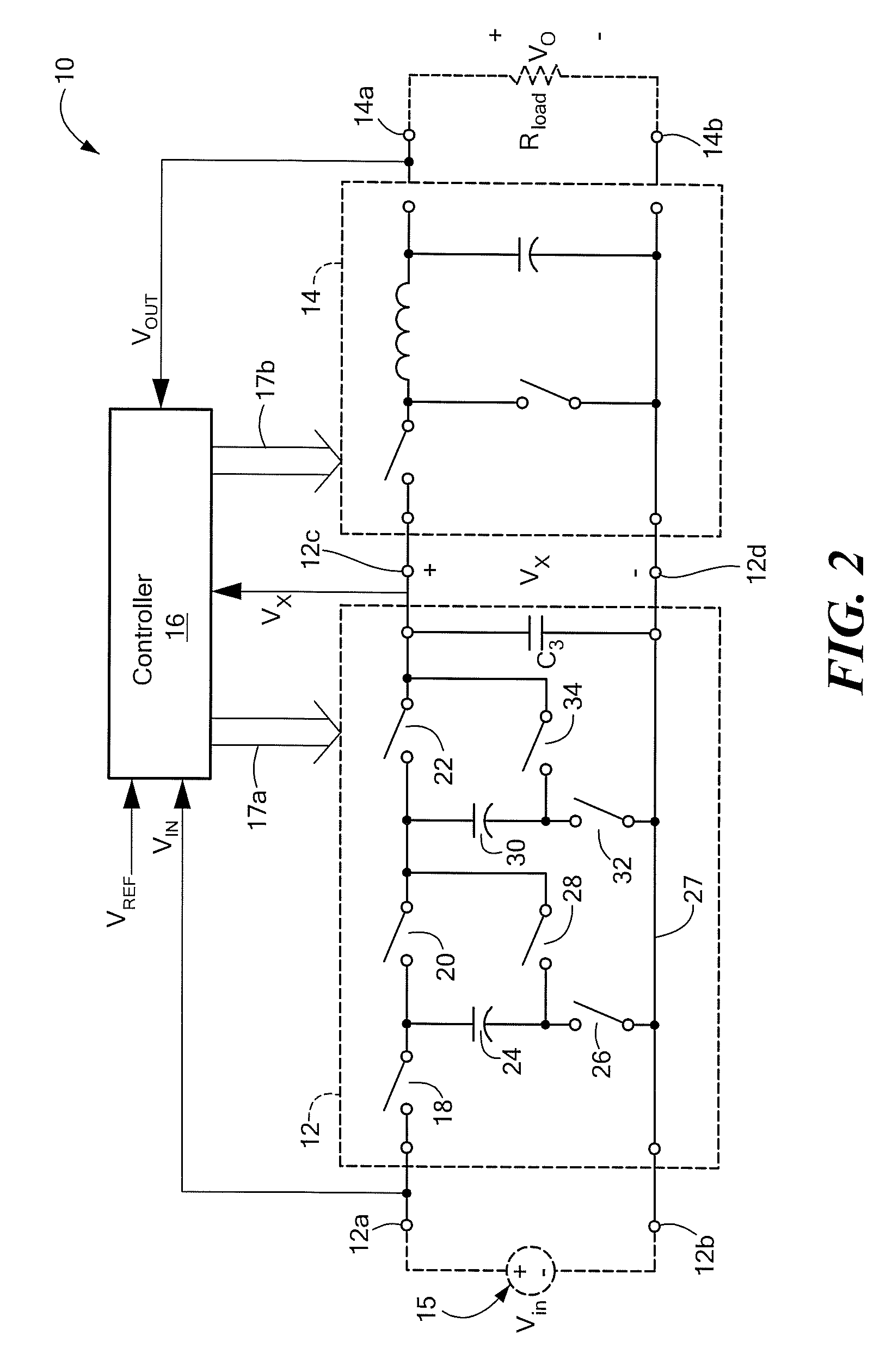Power converter with capacitive energy transfer and fast dynamic response
a technology of capacitive energy transfer and power converter, applied in the direction of electric variable regulation, process and machine control, instruments, etc., can solve the problems of reducing overall efficiency, relative slowness of high-voltage blocking devices, etc., and achieve fast transient response, high power density, and high power density.
- Summary
- Abstract
- Description
- Claims
- Application Information
AI Technical Summary
Benefits of technology
Problems solved by technology
Method used
Image
Examples
Embodiment Construction
[0042]Before describing several exemplary embodiments of power converter circuits and processing performed by and on such power converter circuits, it should be appreciated that, in an effort to promote clarity in explaining the concepts, reference is sometimes made herein to specific switched capacitor circuits or specific switched capacitor circuit topologies. It should be understood that such references are merely exemplary and should not be construed as limiting. After reading the description provided herein, one of ordinary skill in the art will understand how to apply the concepts described herein to provide specific switched capacitor (SC) circuits or specific switched capacitor circuit topologies. For example, while series-parallel SC topologies may be disclosed herein, such disclosure is provided to promote clarity in the description of the general concepts described herein. After reading the disclosure provided herein those of ordinary skill in the art will appreciate that...
PUM
 Login to View More
Login to View More Abstract
Description
Claims
Application Information
 Login to View More
Login to View More - R&D
- Intellectual Property
- Life Sciences
- Materials
- Tech Scout
- Unparalleled Data Quality
- Higher Quality Content
- 60% Fewer Hallucinations
Browse by: Latest US Patents, China's latest patents, Technical Efficacy Thesaurus, Application Domain, Technology Topic, Popular Technical Reports.
© 2025 PatSnap. All rights reserved.Legal|Privacy policy|Modern Slavery Act Transparency Statement|Sitemap|About US| Contact US: help@patsnap.com



